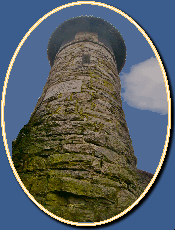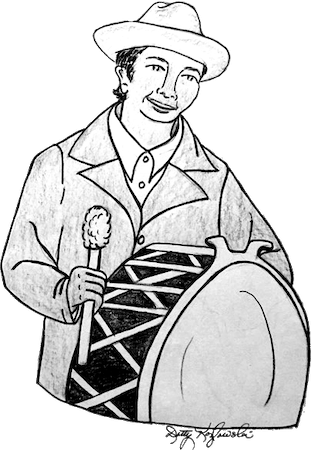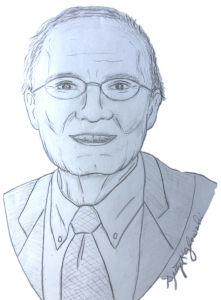Henry Sherman was the last of the Paugussett Indians of Milford. Paugussett means “people who live by the bend in the river – Derby, Wepawaug means "People by the ford in the river" (Near First Church), and Peconics were those by “the shore where the seashells are,” Pequannocks lived on the "Cleared-land-place” and Potatucks were those who lived by various water falls. Though called Paugussetts, the Indians of which Henry was associated, are today described as “Iroquois linguistic group” and ranged the length of the Housatonic River. The greater “tribe” might more accurately be the Indians of the “Great River.” The Five great Iroquois Indian nations swept across New York State from the Mohawks in the northeast to the Oneida in the western end of the finger lakes.
When the Civil War broke out, Henry was living among the Schaghticokes (pronounced scat-a-cooks) at their reservation in Kent established by the Connecticut Colony in 1752. He came back to his ancestral home of Milford to enlist.
Little is known of his war activities other than he lost his left arm during the conflict. His first name was always Henry but he claimed that he added the last name of Sherman to honor General William T. Sherman, the distinguished northern general. There are many Shermans in the area, particularly in Stratford, who claim Indian ancestry so its quite possible it was a family name despite this claim.
Returning to the town of his ancestors alive he was the only identified Indian from Milford to enlist in the Civil War, though mixed white or persons of color with Indian blood lines certainly may have as well. Accepted for his service the town fathers let him stay in Milford awarding him the complete “Freedom of the Town” just like any other Milford citizen. At this time, Indians not assimilated by marriage or otherwise, generally kept to their various reservations and settlements.
Henry was a member of the Grand Army of the Republic (G.A.R.), the civil war veterans association which met in the old town hall. His name does not appear on the civil war monument so there is a question of whether he served in a regiment with the rest of the Milford men. Henry Sherman was not found in a search of the 29th Regiment of Connecticut's “colored” troops either so it is difficult to determine where he served. If he did add the surname Sherman after the war we cannot determine the name he enlisted under. Unquestionably he did serve as indicated by his acceptance by the other GAR civil war vets, and had served in battle as evidence by the loss of his arm.
One of his favorite activities was to play the bass drum in the Milford Coronet Band. A picture from the Moger Collection shows his tall figure next to the drum with the the band on the Town Green.
Also noted in the picture’s caption was that on occasionally returning to his home on the Wepawaug River above the Kissing Bridge late at night, “he would let out a war whoop that would make your blood run cold.”
“He was peaceful, never-the-less, and died about 1900,” the caption added. There are some other reports that toward the end of his life he rejoined other Indians living in Kent but this is unverified.



